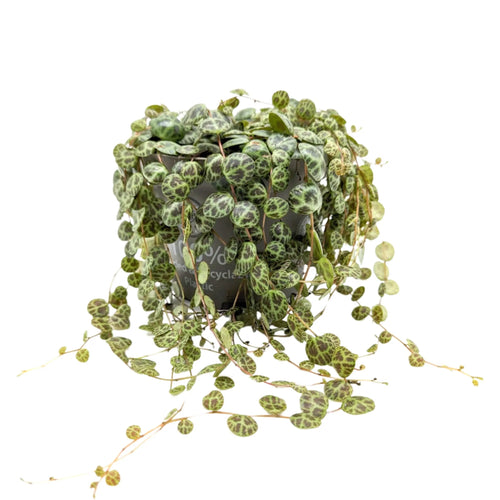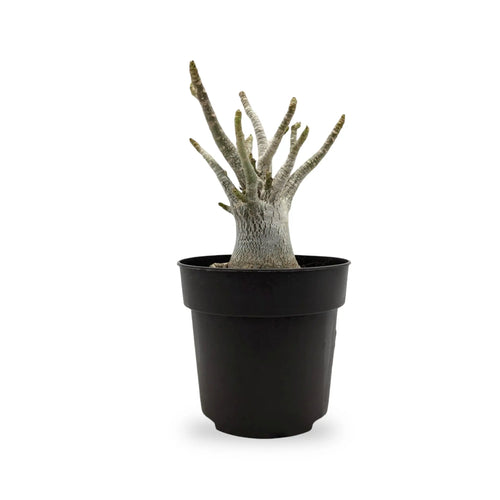I’ll admit—I know very little about the plants on my windowsill. Most of them belong to my roommate, who has nurtured them with great care through sweltering summers, icy winters, a mischievous cat, and even a city move. Each of her plants comes with a story: an African violet passed down from her mother, a spider plant rescued from a stoop, a Chinese money plant bought from a couple in the neighborhood, and pothos cuttings that have been propagated and shared multiple times, one of which now grows in my own space. There’s even a lanky plant from a grocery store that thrives despite sitting above the air conditioner, and another that she scooped from the sidewalk and proudly carried through a Sunday stroll of markets, chance encounters, and subway rides home.
She remembers exactly where each plant came from. To her, they’re not just greenery but chapters of her life, filled with joy, calm, and persistence. Houseplants can weave themselves into our personal stories, but they also come from places and histories far beyond our homes. With the surge in houseplant popularity, especially in recent years, it’s worth asking: do we really know where our plants come from? And more importantly, are they sourced ethically?

The Hidden World of Plant Poaching
As demand for exotic and rare houseplants has grown, so has the troubling practice of plant poaching—the illegal removal of plants from their natural habitats. While this has been a problem for decades, it has escalated in recent years with social media trends fueling global demand. What was once a niche practice has turned into a widespread threat to biodiversity.
Many plants, especially succulents and cacti, grow only in very specific ecosystems. Removing even a handful can destabilize entire populations. Some take decades to mature, so poachers often target older plants, devastating wild communities in the process. In some regions, poaching has become a source of income for locals facing economic hardship, which adds a complex human dimension to the issue. But the damage to fragile ecosystems is severe—uprooted plants disrupt soil, increase erosion, reduce diversity, and harm pollinators that rely on them.
Law enforcement struggles to keep up with this fast-moving trade. Plants stolen from the wild often end up hidden in plain sight—sold in shops, plant markets, and online platforms. Collectors may unknowingly purchase poached plants, becoming part of a chain that fuels extinction risks. Globally, more than a third of cactus species are threatened, with illegal collection being one of the primary causes.
Why Ethical Sourcing Matters
When we buy plants, we’re not just decorating our homes—we’re participating in an industry with environmental and ethical implications. Houseplants may seem like simple commodities, but their journey from soil to shelf often involves complex trade networks. Some are grown responsibly in nurseries, while others may have been stripped illegally from the wild. Knowing the difference is crucial.
Unsustainable plant trade doesn’t just endanger rare species; it also affects broader ecosystems and communities. Removing plants from their native habitats can alter landscapes, reduce biodiversity, and even threaten cultural traditions tied to those environments. By ensuring our plants are ethically sourced, we help protect ecosystems, reduce exploitation, and promote sustainable practices that benefit both nature and people.

How to Source Plants Responsibly
Fortunately, there are ways to grow your collection while making choices that support sustainability. Here are some practices to consider:
1. Try Propagation
One of the most sustainable ways to build a plant collection is through propagation. This process creates new plants from cuttings or divisions, often from a friend’s or neighbor’s collection. Asexual propagation—taking cuttings from stems, leaves, or roots—produces a clone of the parent plant and is simple for many common houseplants. Not only does this reduce the demand for commercial production, but it also creates plants with stories layered in community and care.
2. Buy Local and Ask Questions
Seek out nursery-grown plants or those sold by local growers who can confirm their origins. Buying locally helps reduce transportation-related emissions and supports small businesses. It also gives you a chance to ask sellers directly about the plant’s background. Choosing locally grown or native plants is especially sustainable, as they’re better adapted to your environment and don’t require resource-heavy farming practices.
3. Avoid Unsustainable Growing Mediums
Many commercial houseplants are grown in sphagnum or peat moss, both of which are unsustainable. Harvesting these materials destroys vital ecosystems and releases stored carbon into the atmosphere. Instead, look for alternatives such as coconut coir, compost mixes, or locally sourced organic materials. Supporting sustainable substrates reduces the demand for destructive harvesting.
4. Skip Rare and Trend-Driven Plants
It’s tempting to chase after rare or Instagram-famous plants, but many of these are highly vulnerable in the wild. Unless you can verify that a rare plant has been nursery-propagated, it’s best to avoid purchasing it. Focus instead on plants that are resilient, suited to your space, and sustainably grown. A thriving common plant is far more rewarding than a struggling rare one sourced unethically.
5. Join Plant Swaps and Community Groups
Many cities have plant swap events, garden clubs, and community groups where people share cuttings or potted plants. These networks not only reduce costs but also foster a sense of community around growing and sharing plants. Just be cautious of scams or poached plants sold online, and avoid buying rare plants unless you know their source.
Looking Beyond Trends
It’s easy to get swept up in plant trends, but responsible ownership means thinking critically before making a purchase. Ask yourself: will this plant thrive in my space? Am I ready to care for it long-term? By buying mindfully, you help reduce waste and overproduction in an industry that often relies on resource-heavy farming and transportation.
Additionally, learning about the cultural and geographical history of your plants adds depth to your relationship with them. Each plant species has evolved over millions of years in its native ecosystem. Bringing them into our homes connects us to those distant landscapes, but also comes with a responsibility to honor and protect their origins.
A Shared Responsibility
The fight against plant poaching is ongoing. Conservationists, governments, and local communities are working to enforce protections and replant seized specimens. Yet individuals also play an important role. Every purchase we make sends a signal to growers, sellers, and the industry as a whole about what consumers value.
Being a plant parent means more than just watering schedules and pruning routines. It’s also about making conscious choices that protect the beauty and diversity of plants in the wild. Just like my roommate remembers the stories behind her plants, we can all build collections that tell meaningful stories—stories rooted in care, sustainability, and respect for the environments these plants come from.
Houseplants bring us peace, joy, and connection, but they are not just ornaments. They are living beings with deep histories tied to fragile ecosystems. By sourcing them ethically, we honor both the plants and the places they call home.
Next time you admire the greenery in your home, consider the journey it took to get there. With thoughtful choices, we can ensure those journeys are sustainable ones—so that the plants we love will continue to grow, both in our homes and in the wild, for generations to come.








